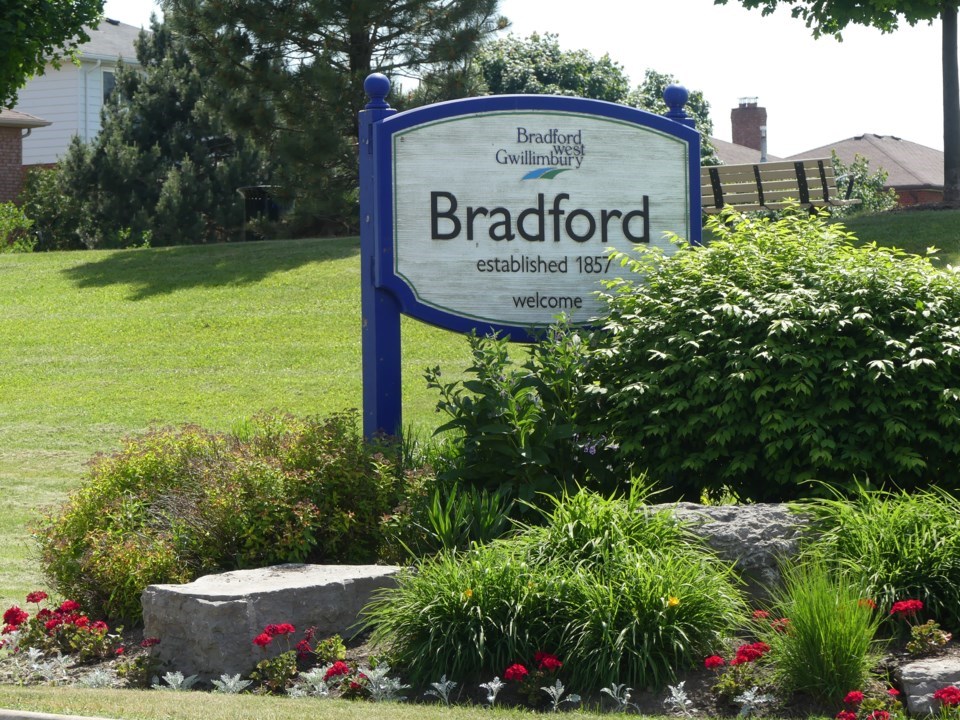With another 40,000 people proposed to call Bradford West Gwillimbury home by 2051, the town needs to figure out how to handle that growth.
An Official Plan update is on tap to plot that growth beyond the current planning horizon of 2031, even though the most recent update to the Official Plan, passed by the town in 2021, is still awaiting a seal of approval from the County of Simcoe.
But a lot has changed since the town approved the document in 2021, and even more so since 2016 when the update process began.
The Province of Ontario and the County of Simcoe have made changes to their planning guidelines that formally extended the development timeline to 2051, with the various changes to the Planning Act and Provincial Policy Statement in the past five years and the more recent adoption of Amendment 7 to Simcoe County’s Official Plan, which allocates population and employment targets for its lower-tier municipalities.
While that amendment is still awaiting approval from the province, those lower-tier municipalities aren’t wasting any time.
“Preparing for growth to the year 2051 involves planning to accommodate an additional approximately 40,000 people and 19,000 jobs relative to 2021, and achieving that will require additional lands being designated for residential development,” indicated a staff report presented to the committee of the whole.
The road to 2051 began at the dawn of the new millennium. The town began planning out to 2026 with its 2002 Official Plan, which called for about 25,000 new residents to call the municipality home over that quarter-century span.
That Official Plan created six secondary plan areas, with five mostly surrounding the former town of Bradford limits and a final in Bond Head. Of those, only the secondary plan for the area to the northeast and northwest of the future Yonge Street interchange of the Bradford Bypass remains to be completed.
The 2021 review confirmed the town had previously allotted enough land to now meet a growth target of more than 50,000 people by 2031. It won’t be so lucky this time around. Staff estimate nearly 450 hectares of additional designated greenfield area lands could be needed to meet the housing requirements to see the town’s population reach nearly 85,000 people by 2051.
No additional land is needed to meet the additional 19,000 jobs slated for the municipality, but Alan Wiebe, the town's manager of community planning, told councillors all current land either zoned commercial or designated to be zoned commercial will need to be utilized, including the northern reserve land in the Highway 400 employment area.
Weibe proposes a two-phased approach to completing the update, starting with an “intensification first” review, in the hope of requiring fewer than almost 450 hectares to meet the growth target.
Part of Phase 1 of the plan would include looking at the 800-metre area surrounding the GO station on Dissette Street and establishing a minimum density of 150 residents and jobs per hectare. While some finessing may be required due to the marshland within that radius, a Bridge Street corridor review would help guide redevelopment, as permitted, in the town’s eastern gateway.
“Through the intensification first approach, we would … explore the community’s appetite to accept, tolerate, welcome intensification, including around the major transit station area, the Bridge Street corridor (and) other residentially designated lands,” Weibe said. “As we know through Bill 23, the province has introduced as of right permissions for up to three dwelling units on residential parcels within the urban boundary which are service.
"But that doesn’t mean to say the town could not explore greater levels of intensification.”
Coun. Peter Ferragine thought this was prudent, as by looking to intensify the density in the current settlement area, the town could avoid over-designating land, as did Couns. Ben Verkaik and Nickolas Harper, who appreciated having options in front of them, rather than being forced to commit to opening up nearly 1,100 acres of farmland for development.
Mayor James Leduc agreed with his colleagues but noted the matter won’t be solved entirely by building up.
“Looking at intensification, looking at the major transit station area, is something we should do,” the mayor said. “Believe it or not, we are going to open up our lands. We will have no choice because the province has already dictated it; it’s come down from the county … We’re going to get to that target well before 2051.”
As part of a second phase, the town would look at a settlement boundary review to determine where new expansion should occur.
Staff estimate the project will cost about $585,000 to complete, with $300,000 needed to implement the findings of Simcoe County’s Municipal Comprehensive Review, $100,000 to undertake a review of the Bridge Street Corridor, $85,000 to develop an intensification strategy and $100,000 to cover half the cost of actually updating the Official Plan.
Committee’s recommendation to move forward with a request for proposals for the project will be voted on during the next council meeting.



